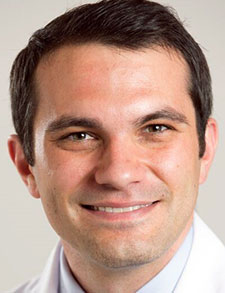Clinical question: Do less potent opioids suffice for adequate pain control for patients with surgically managed fractures?
Background: For post-surgical pain management at time of discharge, hospitalists try to balance the analgesic effects of opioid therapy with the risks of dependency and overdose. Data on optimal discharge opioid dosing for adult patients who have undergone surgical management of fracture are currently limited.
Study design: Double-blind, randomized controlled trial
Setting: Trauma hospital in Sydney, Australia
Synopsis: Adult patients who had sustained non-pathological fractures of a long bone (e.g., femur) or the pelvis, patella, calcaneus, or talus, and who underwent surgical fixation were eligible for the study. Participants were randomized at discharge to receive oxycodone 5 mg or 10 mg four times per day (strong-opioid arm) or acetaminophen-codeine 500 mg/8 mg or 1000 mg/16 mg four times per day (mild-opioid arm). Telephone pain assessments were conducted after discharge using the 0-10 Numerical Pain Rating Scale (NRS).
59 patients were randomized to the strong-opioid arm and 61 to the mild-opioid arm. The daily mean NRS score at day seven post-discharge was 4.04 (95% CI, 3.67-4.41) for the strong-opioid arm and 4.54 (95% CI, 4.17-4.9) for the mild-opioid arm. The difference between the mean daily pain scores during days 1 to 7 was not statistically significant (−0.50 [95% Cl, −1.11 to 0.12]; P=0.11).
Bottom line: Hospitalists should consider lower-potency opioids for patients with non-pathologic post-surgical pain at discharge to minimize the adverse effects of higher-potency opioids.

Dr.Pizanis
Citation: Jenkin DE, et al. Effectiveness of oxycodone hydrochloride (strong opioid) vs combination acetaminophen and codeine (mild opioid) for subacute pain after fractures managed surgically: a randomized clinical trial. JAMA Netw Open. 2021;4(11):e2134988. doi: 10.1001/jamanetworkopen.2021.34988.
Dr. Pizanis is a hospitalist and associate professor of medicine at the University of New Mexico Hospital, Albuquerque, N.M.
If patients were listened to, some would prefer stronger opioids and some would prefer milder ones, some might prefer non-opioid approaches. People are very different when it comes to pain. The important thing is to listen to patients, who often know what their bodies need, even better than doctors. Don’t let your patients scream in agony because some study says they don’t need stronger opioids. Our overdose crisis has little to do with prescription opioids and much more to do with less safe illegal drugs. So why are we still trying to reduce prescription opioids when prescriptions are already at an all time low, the lowest in the last 20 years and continuing to decline while harming the patients who need them.